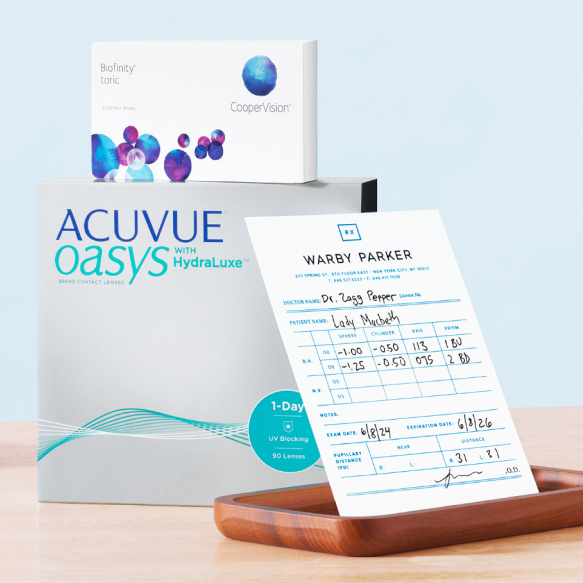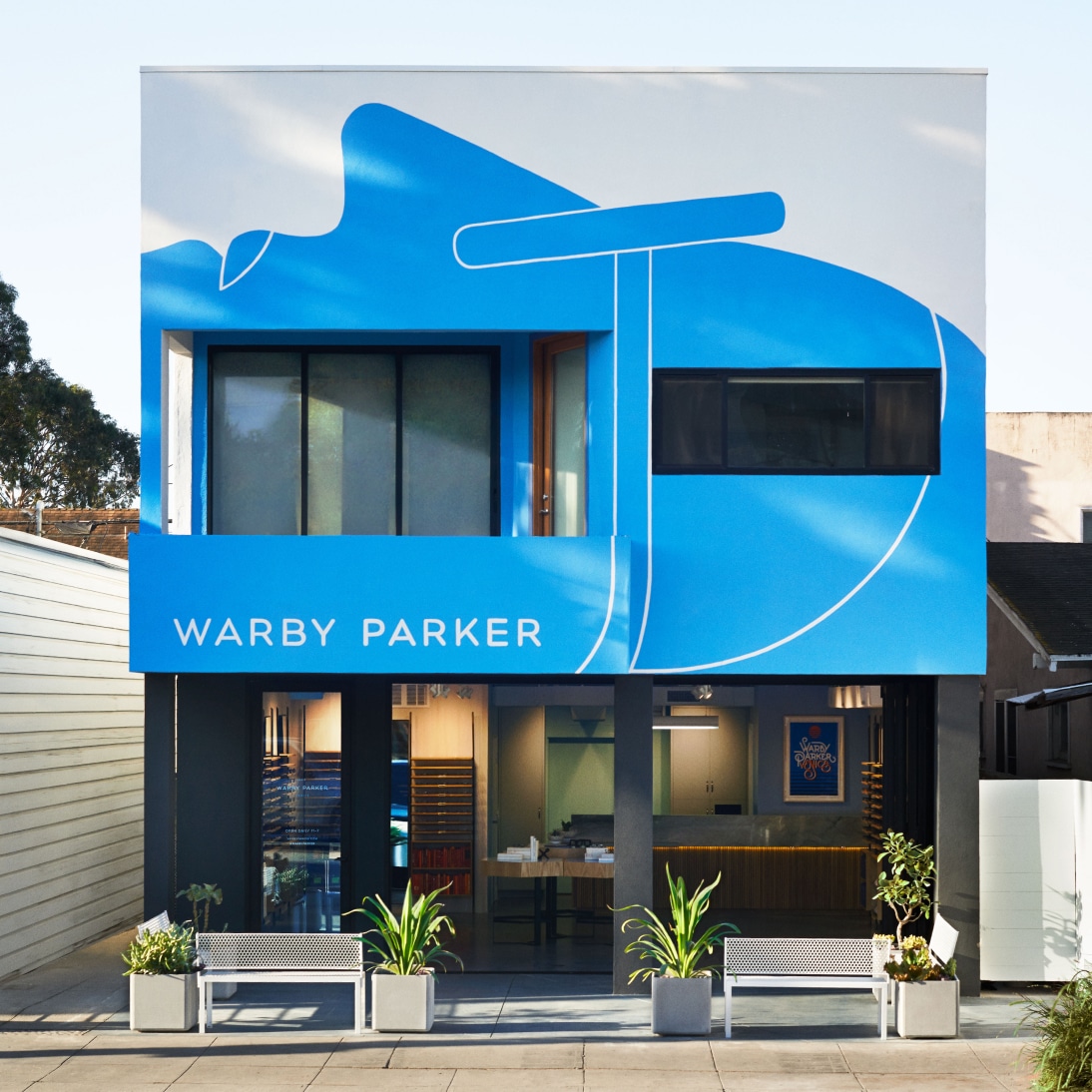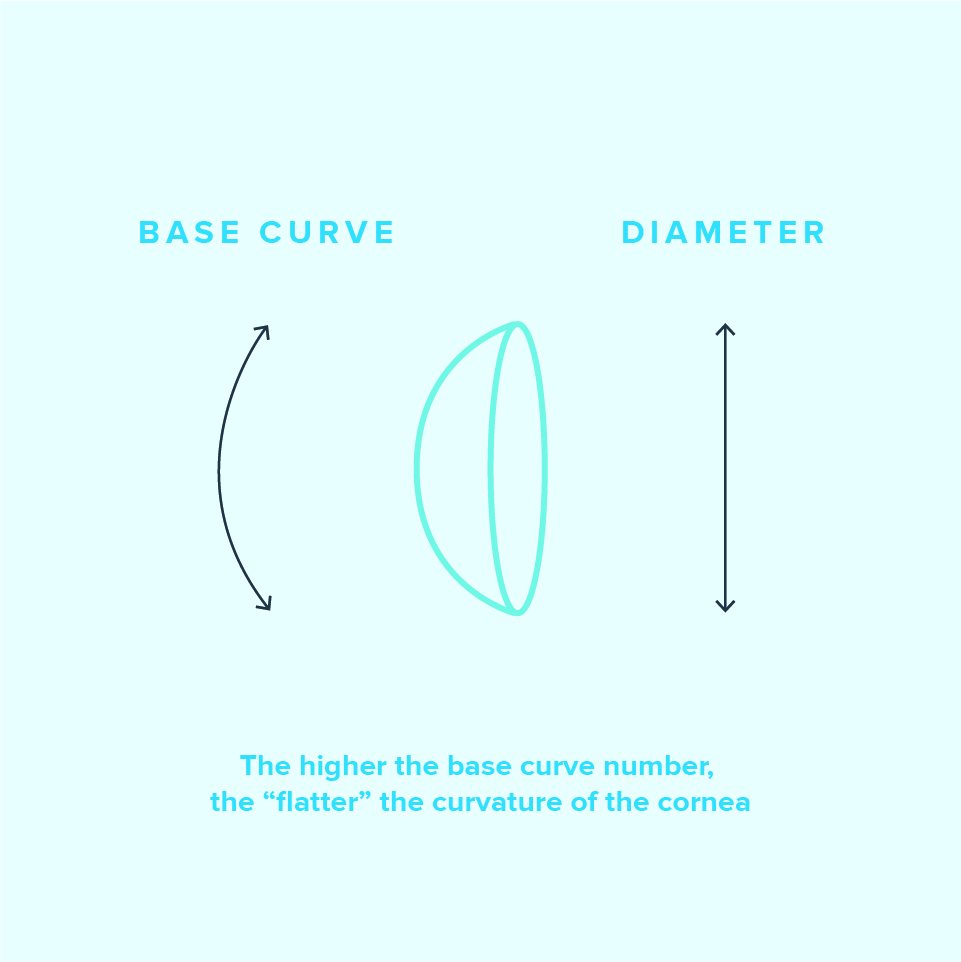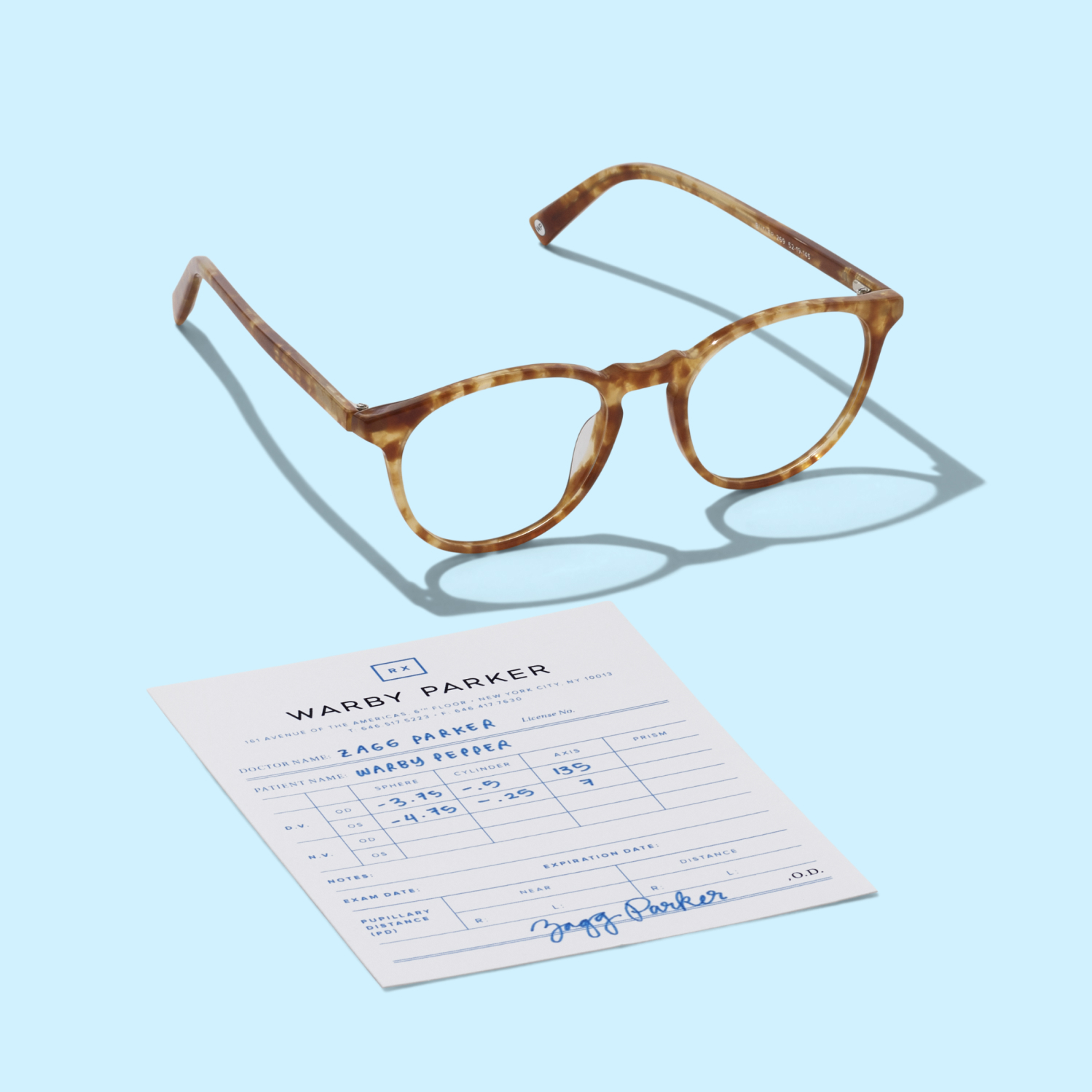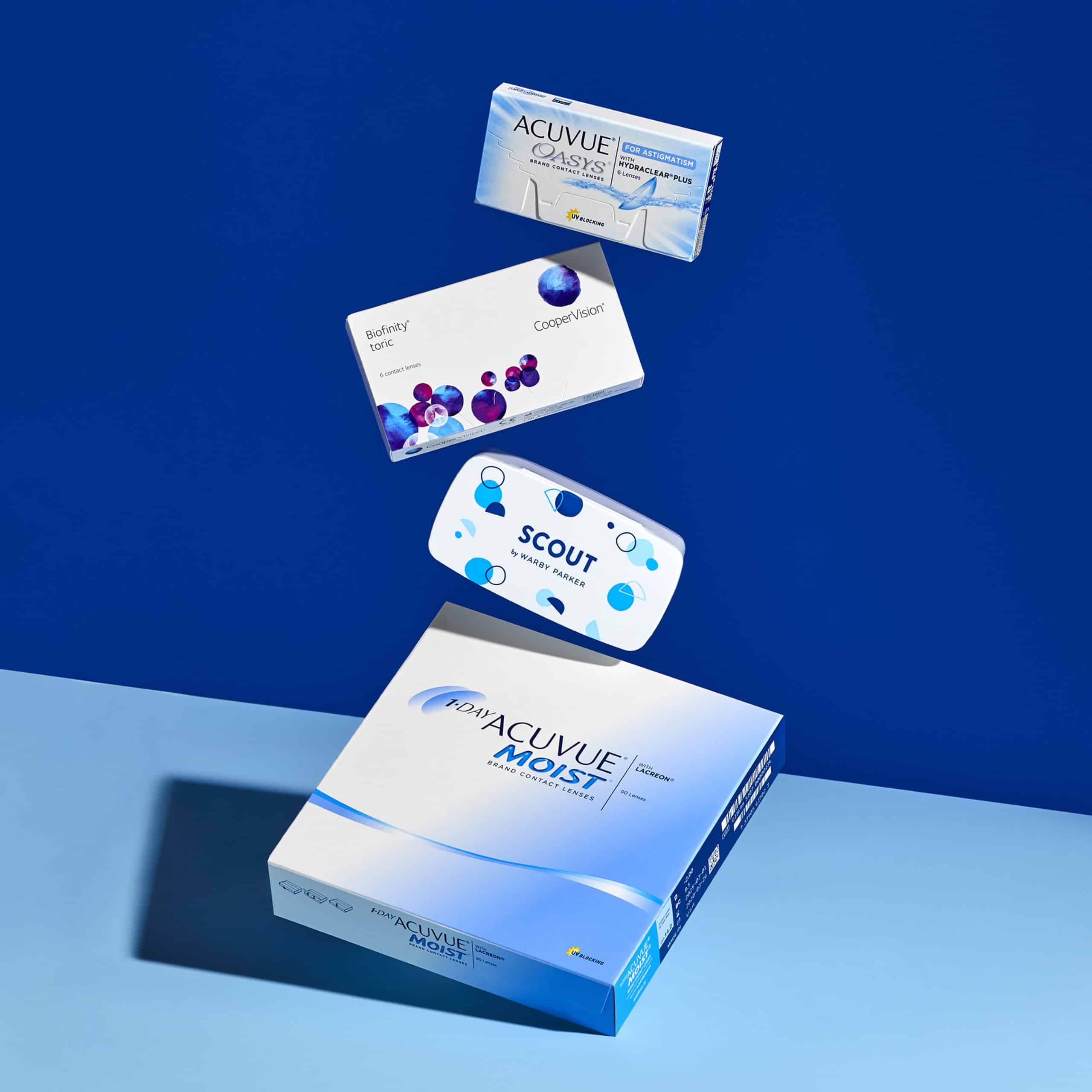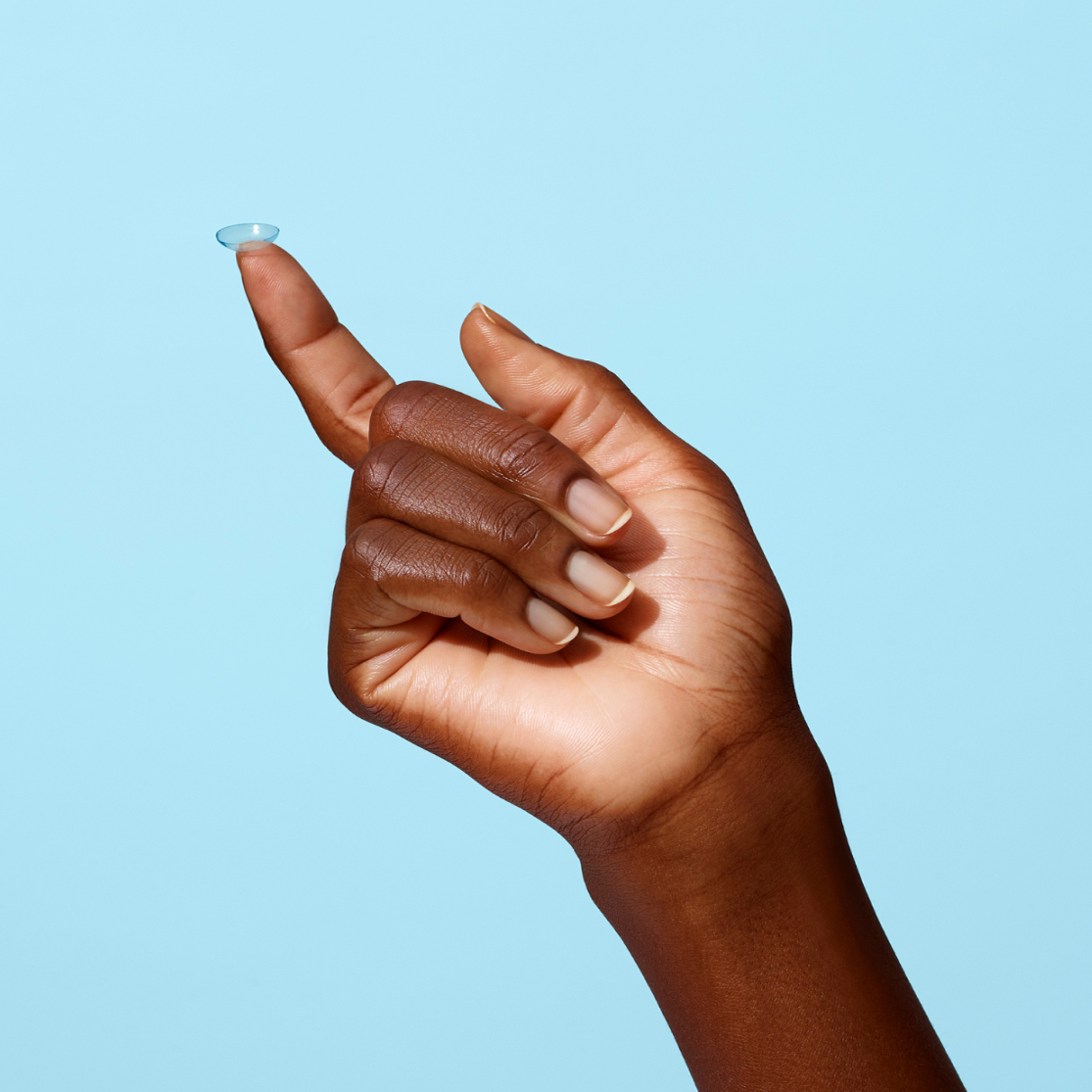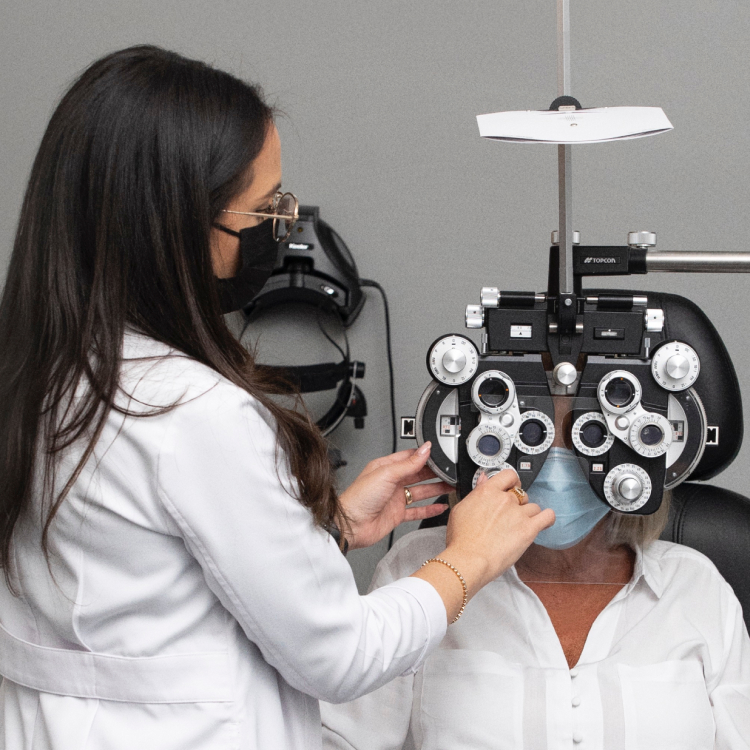You can think of a contact lens exam as an add-on to a comprehensive eye exam. A contact lens exam (an eye exam for contacts) can have several components, including a consultation with the optometrist, measurements of a few parts of your eyes, an eye health evaluation, a tear film evaluation, and a contact lens fitting.
If it’s your first time wearing contacts, this process may also include some instruction on putting in and taking out your contacts. All of these procedures ensure that your contacts will fit comfortably—yes, contacts come in different sizes!—and give you the clearest vision possible.
If you want to wear contact lenses, a contact lens exam is a necessary first step.
Want to know what to expect during a contact lens exam? Yours may not include all of the elements discussed below, as it varies depending on exam findings and vision needs. However, these are the most common steps you’ll encounter as you get ready to be a contact lens wearer.
Contact Lens Consultation
A brief consultation gives you the chance to ask any questions you might have about wearing and caring for contacts.
During the consultation, you and your optometrist will discuss which types of contact lenses will suit your visual needs and your lifestyle. The optometrist will want to know the answers to questions like: Do you plan on wearing contacts for the majority of your day? Are you interested in wearing contacts solely for certain activities like sports?
If you have astigmatism, presbyopia, or any other condition that will influence what type of contact lenses you wear, your optometrist will make recommendations accordingly. You can also discuss the advantages and disadvantages of different disposable contact lenses—whether they’re for daily, biweekly, or monthly use.
Eye Measurements
During your contact lens exam, your optometrist will need to measure certain parts of your eye to make sure your contacts fit well.
Corneal Curvature and Contact Lens Diameter
Using a tool called a keratometer, the optometrist will measure the curve of your cornea. This measurement helps your eye doctor decide the base curve of your contact lens, which appears on your prescription as “BC.” Prescribing a contact lens curve based on your cornea’s curvature is essential for comfort, ocular health and clear vision.
If your cornea has a particularly uneven curve or other abnormalities, it may need to be “mapped” with more advanced tools that show its topography in detail.
The optometrist will also include a contact lens diameter on your prescription. Contact lens diameters typically fall between 13 and 15 millimeters, but even a slight shift in diameter can mean a big difference in fit.
Pupil Size
Your optometrist may measure your pupil as well. This measurement is especially important for multifocal and cosmetic contacts, since it helps determine how well you’ll see through the lens.
Tear Film Evaluation
Eyes prone to dryness often have more difficulty wearing contact lenses. For this reason, your optometrist may use a microscope, employ certain types of dyes, or perform tests to examine the tear film that naturally moisturizes the surface of your eye. The results of this evaluation can help determine the best contact lens material for you.
Contact Lens Fitting
The contact lens fitting allows your optometrist to look at how a particular contact lens functions and fits your eye as you’re wearing it. After the above portions of the contact lens exam have been completed, the optometrist will have you put in a pair of trial contacts based on their recommendations. Then, they’ll look at your eyes through the slit lamp microscope to gauge for proper movement and centration.
They’ll also test your visual acuity while you’re wearing the contacts to see if they’re performing as they should. This portion of the contact lens exam will feel similar to the refraction test performed during a standard eye exam—you’ll probably read lines from a chart or screen.
What Happens After a Contact Lens Exam?
Once your optometrist determines the contact lenses are optimal for your vision, eye health, and lifestyle needs, the exam portion is over and you’ll get your contact lens prescription.
But if you’re a first-time wearer, you may have to practice putting your contact lenses in and taking them out. A member of the eye care team at your optometrist’s office will guide you through the steps and have helpful tips.
You may be given trial lenses to use over the next several days—some prescriptions are trickier than others, and it’s important to get them right. Monitor how you feel while wearing your new contacts and get used to caring for them. Your optometrist may want a follow-up appointment to take another look at your eyes while your contacts are in to make sure the contact lenses are working well.
How Often Do You Need a Contact Lens Exam?
Just like your regular eye exams, contact lens exams should occur yearly. Annual contact lens exams give your eye doctor a chance to update or renew your prescription, as well as check for any contacts-related health issues. These exams also allow you to ask your optometrist for any further recommendations.
To avoid two separate trips, you can always request that your contact lens exam be conducted at the same appointment as your comprehensive eye exam.
How Much Does a Contact Lens Exam Cost?
Contact lens exams typically cost somewhere between $100 and $250. At Warby Parker stores, eye exams for glasses and contacts start at $130 (prices may vary depending on the location and your vision benefits).
Contact lens exams involve highly detailed measurements of your eye and an optometrist’s expertise in fitting you with the best contact lens option based on your measurements, prescription, vision needs, and ocular health. It’s a multi-step process that can kick off a lifelong relationship with contact lenses—the cost correlates with the effort and knowledge necessary for the optometrist to complete the exam.
What’s the Difference Between a Contact Lens Exam and a Comprehensive Eye Exam?
Whether or not you need vision correction, a comprehensive eye exam is a major component of your health care. During this exam, your eye doctor not only checks your vision but also carefully checks for eye conditions, as well as some general health issues.
If you want contact lenses, you’ll need a contact lens exam in addition to, or as part of, a comprehensive eye exam. During a contact lens exam, your doctor determines the best type and brand of lenses for you and your needs. And you’ll have aspects of your eyes, such as their curvature, measured so the contacts fit properly.
Based on findings, the optometrist will write a contact lens prescription, which you’ll need in order to buy contacts safely—from a reputable retailer.
Why Is a Contact Lens Prescription Different From a Glasses Prescription?
Contact lenses differ from the lenses in eyeglasses. When worn, contact lenses sit right on the eyes’ surface, in contact with the cornea—which explains why they’re called “contacts.” On the other hand, eyeglass lenses hover in front of your eyes without touching them. Because of this difference in distance, the prescriptions tend to vary.
A contact lens prescription also includes additional specifications—such as the brand and measurements of the contacts—not found on a typical eyeglass prescription.
A Contact Lens Exam Is Your Key to Comfort and Convenience
Once you’ve completed your contact lens exam and follow-up appointment(s), you’re free to order contacts online or through your optometrist. We hope you have a better idea for what to expect from your first exam, and that you’ll enjoy all the comfort and freedom that contact lenses have to offer.

